Quote
You will find the way, daughter of the forest. Through grief and pain, through many trials, through betrayal and loss, your feet will walk a straight path.
Juliet Marillier, Daughter of the Forest
4 notes
·
View notes
Photo
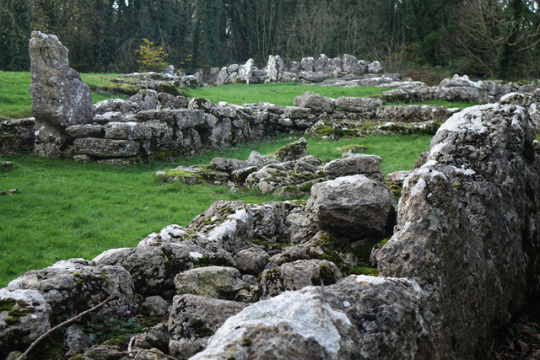









Din Lligwy Romano-Celtic Settlement, 4th century CE, Anglesey, North Wales, 25.11.17.
An extensive farming and defensive settlement comprising roundhouses and rectangular smithy buildings and outhouses.
703 notes
·
View notes
Quote
Our strength comes from that magic, from the earth and the sky, from the fire and the water. Fly high, swim deep, give back to the earth what she gives you...
Juliet Marillier, Daughter of the Forest
3 notes
·
View notes
Photo

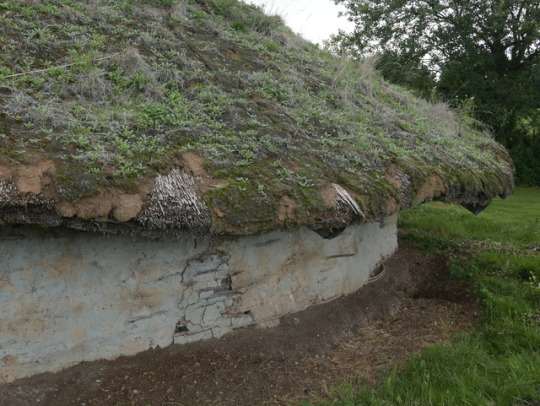




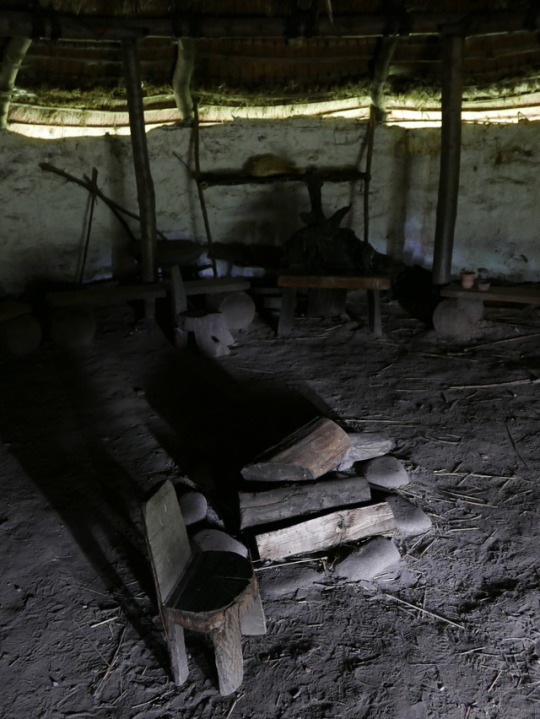

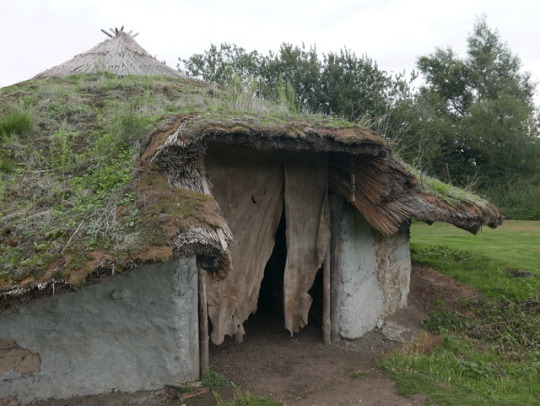

Bronze Age Roundhouse, Flag Fen, Peterborough, 21.8.17. A well established example of a Bronze Age roundhouse constructed using traditional methods.
578 notes
·
View notes
Photo

CAILLEACH - In Irish, Gallaecian and Scottish mythology, Cailleach, also known as the Cailleach Bheur, is a divine hag, a creatrix, and possibly an ancestral deity or deified ancest. Her function would be to protect all animals in winter and autumn and take care of nature, although it is believed that she was also the spirit of winter, which did not allow nature to develop freely. She carries a hammer for shaping the hills and valleys, and is said to be the mother of all the goddesses and gods.
In partnership with the goddess Brìghde, the Cailleach is seen as a seasonal deity or spirit, ruling the winter months between Samhainn (1 November or first day of winter) and Bealltainn (1 May or first day of summer), while Brìghde rules the summer months between Bealltainn and Samhainn.
The origin of the toponym "Gallaecia", northwest of the Iberian peninsula (Galicia, northern Portugal, Asturias and León) comes from "Cailleach". Historians agree that the Roman Empire began the conquest of Gallaecia, entering from the south, from Lusitania (Central Portugal) and then marching north. According to the chronicles, the first Celtic tribe encountered by Romans was named Callaeci. This word appears to be a Latin adaptation of "worshipers of Cailleach". This implies that the inhabitants of this place regarded Cailleach as an important deity. The region was known as Callaeci Cale (now Oporto, northern Portugal). In Cale, Celtic culture flourished at the foot of the hills by the river Douro. The Romans distinguished between Cale (establishment), Calleaeci (name by which designated the inhabitants) and Portus Cale (Port of Cale). The whole region became a Roman province, under the name of Gallaecia or Callaecia. The name of Portugal derives from the the roman designation "Portus Cale" and the name of Galicia comes from Cale.
The reason why the Romans decided to name the province Callaecia or Gallaecia is unknown. The Callaeci were only a specific tribe among all the tribes of the future Roman province. One possible explanation is that they adopt the name of the fisrt tribe they met, no matter their size or location. Some authors sustain the idea that the name was taken from the term used to describe the "worshipers of Cailleach" Kallaikoi (καλλαικoι), as they would have been named by the Greek merchants, who allegedly arrived at the coast of Gallaecia before the Romans.
fonte
#Gallaecia#Callaecia#Cailleach#goddes#deusa#celtas#celta#celtic#celtic goddes#ancient celts#celts#celt#pagan#paganism#deuses
1 note
·
View note
Photo

GAULS OF THE EAST: PART 1 – BANDITS OF THE BALKANS
In this post I will be covering the rarely spoken of Gauls of southeastern Europe, their invasion of Greece, employment as mercenaries under Ptolemaic Egypt, their rebellious and warlike society as well as their little known kingdom of Tylis in Thrace. I will also cover their weaponry, armors and some archaeological finds.
Suggested by: @hardcore-crunchy-nut, @hugh-ardoin, @jhk-1, @reimaginings-of-the-middle-ages, @mcmarra, @iseesigils, @echogolfdelta, @yamswool, @ignited-euphoria, @mustangbratt, @wadeo-potato.
The rarely spoken of eastern Gauls lived on the edge of the Hellenistic world, raiders seeking riches and migrants in search of new lands. With the deaths of Alexander his Diadochi (“successors”) squabbled over the remnants of his empire and in their endless bickering, Macedon, Greece and Thrace were greatly weakened. As their fractured Hellenic neighbors struggled to hold their own, these eastern Celts seized the moment to invade and enter this Hellenistic game of thrones. In time these Celts can be seen inhabiting or working as mercenaries from eastern Europe to Egypt in the south and Persia in the east.

^ Celtic Expansion, 3rd century BCE.
According to Titus Livius (Livy, History of Rome, 5.34) the Celtic Bituriges of central Gaul (modern France) held supremacy there and made up one third of Gauls population. The king at the head of the Bituriges (“kings of the world”) was named Ambigatus, a man renowned for leading Gaul into a golden age of prosperity and growth. As Ambigatus grew older he became more concerned about the overpopulation burdening Gaul so he had two of his sister’s sons lead vast multitudes of Gauls elsewhere, settling wherever “the gods should grant them by augury; that they should take out with them as great a number of men as they pleased, so that no nation might be able to obstruct them in their progress”.
One of these sons was named Bellovesus and he would lead “Biturigians, the Arvernians, the Senonians, the Aeduans, the Ambarrians, the Carnutians, and the Aulercians” into Italy where they would become a great menace in the eyes of the Romans. The other brother, Sigovesus, was sent towards the Hercynian forest, a dense woodland on the German side of the Rhine River. This was but one step on this eastern Gallic migration, soon we find both Roman and Greek writers mentioning Celtic peoples in southeastern Europe, north of the Hellenistic world. These Gallic migrants now dwelled in regions south of the Danube River; namely the western borders of Thrace and Dacia with their core territory being just north and within the realm of the Illyrians.

One of the first victims mentioned to fall to these migrating Gauls were the Illyrian Ardiaei, a tribe that would be renowned in later history for their piratical activities in the Adriatic coast, their wars against Rome and their infamous queen Teuta. The Illyrian Ardiaei were known to love getting drunk, eating insatiably and celebrating daily so the Gauls used this to their advantage. The Gauls held a great feast at their camp and then abandoned it in order to lure the Ardiaei into pillaging their camp, the Gauls made sure to “put in the food certain herbs which had the power to cause severe pains and diarrhea.”
“When this had been done some of them were taken by the Celts and put to death, the others threw themselves into the river, being unable to endure the pains in their stomachs.” – The History of Philip by Theopompus.
Philip II’s brother Perdiccas III (both were sons of Amyntas III) lost his life during their conflict with Bardylis of Dardania (Thraco-Illyrians), when Philip II (Alexander the Great’s father) became king of Macedon (ruled, 359-336 BCE) he was successful in defeating and dismantling the Dardanians (Thraco-Illyrians) and some Illyrian tribes. Around this time the Gallic migrants were flooded with Greek armaments and coins which came from Macedonia during Philip II’s reign so it’s believed that these Gauls may have been hired as mercenaries to aid Philip II in defeating the Illyrians.

^ Kingdom of Macedon c.336 BCE.
Gallic mercenaries under Dionysius I of Syracuse
This was, however, not the first time the Greeks had encountered the Celts. While Dionysius I of Syracuse (ruled, 405-367 BCE), also known as Dionysius the Tyrant, was warring against the Greeks of Magna Graecia (“Great Greece”, southern Italy) an embassy of Gauls from northern Italy seeking friendship and allegiance spoke with him. These Gauls were probably from the Senones tribe since they are mentioned to have been the same Gauls that lived in northern Italy and sacked Rome not long ago. Some modern historians believe that said Gauls marched south against the Romans under the direction of Dionysius I of Syracuse.

The reason for this was so, with Rome preoccupied with the Gallic menace, Dionysius could freely attempt to subjugate the whole of Sicily without Roman intervention. Some of those Gauls who warred with Rome were now in southern Italy and dwelled within the “midst of his enemies”, they informed Dionysius that they could “be of great service to him, either by supporting him in the field, or by annoying his enemies in the rear when they were engaged with him” (Epitome of the Philippic History of Pompeius Trogus by Marcus Junianus Justinus, 20.5). In 367 BCE Dionysius I of Syracuse hired them then sent two thousand Celts and Iberians to Greece in order to aid the Spartans against the Boeotian League of Greek nations (ex. Athens, Thebes and Corinth).
“From Sicily, Celts and Iberians to the number of two thousand sailed to Corinth, for they had been sent by the tyrant Dionysius to fight in an alliance with the Lacedaemonians, and had received pay for five months. The Greeks, in order to make trial of them, led them forth; and they proved their worth in hand-to-hand fighting and in battles and many both of the Boeotians and of their allies were slain by them. Accordingly, having won repute for superior dexterity and courage and rendered many kinds of service, they were given awards by the Lacedaemonians and sent back home at the close of the summer to Sicily.” – The Library of History by Diodorus Siculus, 15.70.1.
According to Xenophon, when the Spartans were about to assault the Thebans, Corinthians and Athenians near the city of Corinth “the expedition sent by Dionysius to aid the Lacedaemonians sailed in, numbering more than twenty triremes” arrived to aid them. While the cavalrymen on the side of the Boeotian League were too afraid to attack the larger Spartan army, the 50 horsemen (Celts and/or Iberians) sent by Dionysius advanced on the enemy. These few brave cavalrymen scattered themselves and charged toward the enemy, hurling javelins at their front ranks, retreating from their advance and then returning to again assail them with javelins.

“[21] But the horsemen sent by Dionysius, few though they were, scattering themselves here and there, would ride along the enemy’s line, charge upon them and throw javelins at them, and when the enemy began to move forth against them, would retreat, and then turn round and throw their javelins again. And while pursuing these tactics they would dismount from their horses and rest. But if anyone charged upon them while they were dismounted, they would leap easily upon their horses and retreat. On the other hand, if any pursued them far from the Theban army, they would press upon these men when they were retiring, and by throwing javelins work havoc with them, and thus they compelled the entire army, according to their own will, either to advance or to fall back.
[22] After this, however, the Thebans remained but a few days and then returned home, and the others likewise to their several homes. Then the troops sent by Dionysius invaded the territory of Sicyon, and they not only defeated the Sicyonians in battle on the plain and killed about seventy of them, but captured by storm the stronghold of Deras. After these exploits the first supporting force sent out by Dionysius sailed back to Syracuse.” – Hellenica by Xenophon, 7.1.21-22.
TESTING THEIR HELLENISED NEIGHBORS: “they feared no one, unless it were that Heaven might fall on them”
Embassies to Alexander the Great
After the assassination of Philip II, Alexander III (the Great) claimed the throne in 336 BCE and began securing the hegemony his father had created. In 335 BCE the Gauls sent Alexander an embassy while the latter was campaigning against the Thracians, Getae and Triballi. Many historians believe that their true intent was to probe and evaluate the strength of Alexander’s kingdom.
“Ptolemaeus, the son of Lagus, says that on this expedition the Celti who lived about the Adriatic joined Alexander for the sake of establishing friendship and hospitality, and that the king received them kindly and asked them when drinking what it was that they most feared, thinking they would say himself, but that they replied they feared no one, unless it were that Heaven might fall on them, although indeed they added that they put above everything else the friendship of such a man as he.” – Geography by Strabo. 7.3.8.
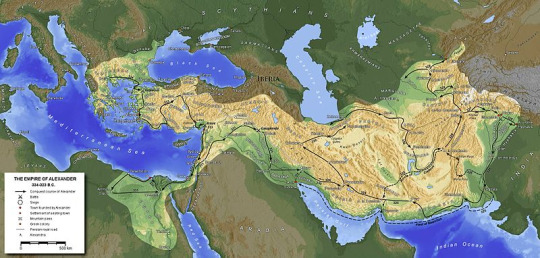
After Alexander the Great had successfully defeated the Persians and returned from his Indian campaign, just before his death, the whole of the known world sent embassies to him in Babylon congratulating him in his success and to kiss ass.
“[1] Now from practically all the inhabited world came envoys on various missions, some congratulating Alexander on his victories, some bringing him crowns, others concluding treaties of friendship and alliance, many bringing handsome presents, and some prepared to defend themselves against accusations.
[2] Apart from the tribes and cities as well as the local rulers of Asia, many of their counterparts in Europe and Libya put in an appearance; from Libya, Carthaginians and Liby-Phoenicians and all those who inhabit the coast as far as the Pillars of Heracles; from Europe, the Greek cities and the Macedonians also sent embassies, as well as the Illyrians and most of those who dwell about the Adriatic Sea, the Thracian peoples and even those of their neighbors the Gauls, whose people became known then first in the Greek world.” – The Library by Diodorus Siculus, 17.113.1-2.
Gauls against the Illyrians
The Illyrian Ardiaei were rivals of another, but far greater, Illyrian people known as the Autariatae. At this point the Autariatae were at their peak and held much of Illyria under their sway, from the Dalmatian coast to the borders of Bulgaria. The Autariatae had earlier expelled the mountaineer Triballi (Thracians) and forced the Macedonians to pay them tribute annually.

^ Teuta by Mariusz Kozik.
“The practice of mutilating prisoners may be the reason why the Autariatae killed their own weak and wounded, so that they did not fall into the hands of the enemy live and edible.” – The Illyrians by John Wilkes.
Molistomos (310-298 BCE) was able to overwhelm the Illyrian Autariatae who were already at war with the Paeonians (Thracians, Illyrians or both), these fractured Paeonians refugees were then settled by the Macedonians under Cassander (a Diadoch) who settled twenty thousand of them on their border as a buffer. While here Cassander marched a force to the slopes of Mount Haemus (Balkan mountains of central Bulgaria) where he defeated a force of Gauls constructing ramparts. In passages from Pliny the elder (‘Natural History’) and a fragmentary text (mentioned below) there is mention of a plague of frogs and mice who torment their neighbors, some historians believe that in actuality this is but a metaphor for the Gauls.
“During these transactions, Cassander, returning from Apollonia, fell in with the [Autariatae], who, having abandoned their country on account of the vast number of frogs and mice that infested it, were seeking a settlement. Fearing that they might possess themselves of Macedonia, he made a compact with them, received them as allies, and assigned them lands at the extremity of the country.” – Epitome of the Philippic History of Pompeius Trogus by Marcus Junianus Justinus, 15.2.
“Somewhere in Paeonia and Dardania frogs fell from the sky like rain and there were so many that the houses and streets were full of them. During the first days the people somehow bore it by destroying them and shutting up the houses. But as this achieved nothing, and their very cooking pots got filled with frogs which got boiled and baked with the food, and neither could the water be drunk, nor could men put foot to the ground for the multitude of them, and as the stink from the dead creatures was odious, the people abandoned their homeland.” – Heraclides, fragment 3, FHG vol. 3.

^ Kingdom of Macedon under Cassander.
This loss showed the Gauls that it was not yet time to invade as their Hellenised neighbors were still too powerful. The Gauls stationed themselves on the borders of the Hellenised world for some time; from here future campaigns against the Thracians, Macedonians and the Greeks would soon be launched. After the death of Cassander, Diadoch and king of Macedonia, a Gallic chief named Cambaules led a force against the Thracians but still the Gauls feared the military strength and multitude which the Macedonians and Greeks held so they ended their campaign and returned.
“But when they resolved a second time to carry their arms into an enemy’s country—a step to which they were chiefly instigated by the men who had been out with Cambaules, and in whom the experience of marauding had bred a love of plunder and booty—a large force of infantry assembled, and there was no lack of recruits for the cavalry.” – The Description of Greece by Pausanias.
The cracks begin to show
It seemed as though, despite the loss of the great military minds of Alexander the Great, his Diadochi or “successors”, were still too powerful for the Gauls to overwhelm. Their next expedition would have to be timed at a moment when Macedonia and the Greeks were divided and weakened. This opportunity arose when, in the matter of three years, three great Diadochi passed away. Each of these three had established their own independent realms from the fragments of Alexander’s empire.
Ptolemy I Soter, founder of the Ptolemaic dynasty of Egypt (Hellenistic Egypt), died in 283/2 BCE.
Lysimachus founder of the Lysamichid dynasty of Hellenistic Thrace, Asia Minor and co-ruler of Macedonia, died in a battle against Seleucus I Nicator in 281 BCE.
Seleucus I Nicator, founder of the Seleucid dynasty of the Near East and Greater Persia, was assassinated in 281 BCE shortly after his victory over Lysimachus.

^ Wars of the Diadochi c.279 BCE [Source].
Ptolemy Ceraunus, ‘the thunderbolt’
With the deaths of these three major Diadochi, Gallic chief Bolgios chose a very opportune moment to assault the Macedonians and Thracians as they were both reorganizing under their new kings and were locked into a game of thrones. The Diadoch Lysimachus fell in the Battle of Corupedium against the Diadoch Seleucus I Nicator, shortly after the latter was assassinated by Ptolemy (son of Ptolemy I Soter) who then claimed the Macedonian throne for himself. This Ptolemy was also given the nickname ‘Ceraunus’, “thunderbolt”, for his daring initiative.
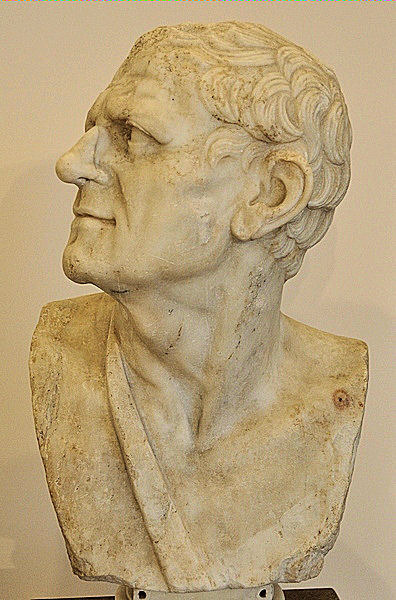
^ Marble bust of Lysimachus. Naples, Museo Archeologico Nazionale di Napoli (Archaeological Museum), Italy.
“The assassin (Ptolemy Ceraunus) gave up the treasures to the guards to plunder, and reigned over Macedonia until, venturing to give battle to the Gauls (he was the first king we know of who did so)” – The Description of Greece by Pausanias.
“Bolgius marched against the Macedonians and Illyrians, and engaged in conflict with Ptolemy, then king of Macedonia. It was this Ptolemy who first sought the protection of Seleucus (I Nicator), son of Antiochus, and then assassinated his protector, and whose excessive daring earned him the nickname of Thunderbolt (Ceraunus).” – The Description of Greece by Pausanias.
Plutarch writes that Ptolemy Ceraunus was heavily plagued by nightmares stemming from his betrayal and assassination of Seleucus I Nicator, namely he dreamt that he was “cited to the judgment-seat by Seleucus, where wolves and vultures were his judges” (Plutarch). Ptolemy was well aware of the Gallic approach but dismissed them as being any true threat, his pride and overconfidence led him to even dismiss the aid of twenty thousand men offered by Dardanians (Thraco-Illyrians) for the purpose of defeating their Gallic neighbors

^ A Roman copy of a Greek statue of Seleucus I found in Herculaneum. Now located at the Naples National Archaeological Museum.
“An embassy from the Dardanians, offering him twenty thousand armed men, for his assistance he spurned, adding insulting language, and saying that “the Macedonians were in a sad condition if, after having subdued the whole east without assistance, they now required aid from the Dardanians to defend their country; and that he had for soldiers the sons of those who had served under Alexander the Great, and had been victorious throughout the world.” This answer being repeated to the Dardanian prince, he observed that “the famous kingdom of Macedonia would soon fall a sacrifice to the rashness of a raw youth.”” – Epitome of the Philippic History of Pompeius Trogus by Marcus Junianus Justinus, 24.4.
The Gauls under Bolgius sent envoys to Ptolemy Ceraunus, offering him peace in exchange for a fee but Ptolemy refused and boasted to his courtiers “that the Gauls sued for peace from fear of war.” Ptolemy told the ambassadors, right in front of the Gallic envoys, that he would only grant them peace if they turned their chiefs over to him as hostages and gave up their arms. When the Gallic envoys returned and relayed the message the Gauls laughed it off and said that they would show Ptolemy Ceraunus “would soon see whether they had offered peace from regard for themselves or for him.” Bolgius lead a force against Ptolemy Ceraunus, defeated them in battle, beheaded Ptolemy, placed his head on a spear, paraded it before his own people and executed or sacrificed the Macedonian captives.

^ Concord - Ancient Celts.
“-and the Macedonians were defeated and cut to pieces. Ptolemy, after receiving several wounds, was taken, and his head, cut off and stuck on a lance, was carried round the whole army to strike terror into the enemy. Flight saved a few of the Macedonians; the rest were either taken or slain” – Epitome of Philippic History by Justin, 24.5.
“Ptolemy himself fell in the battle, and the Macedonian loss was heavy; but again the Celts had not the courage to march against Greece, and so the second expedition returned home again” – The Description of Greece by Pausanias.
Bolgius didn’t follow up this victory, their momentum was eventually stunted by a nobleman and officer named Sosthenes who took on the title of strategos (general) rather than a kingly title. Defeated, the Gauls under Bolgius returned to their base of operations with their riches. Although thoughts of a successful invasion seemed bleak, the fateful tides were now turning in their favor. More Gauls back home were inspired by the promise of riches in a domain now showing signs of instability as the Macedonian throne was being pass from person to person.
Ptolemy Ceraunos, who ruled from 281–279 BCE was killed by Bolgius, as stated above.
Meleager, the brother of Ptolemy Ceraunos, ruled for two months before being forced to resign by his own troops in 279 BCE.
Antipater ruled for such a short time (45 days) that he was nicknamed Etesias (“annual wind”), brief summer winds. Antipater Etesias.
Sosthenes, the nobleman mentioned above, deposed Antipater Etesias and ruled as strategos (general) of Macedonia from 279-276 BCE.
Now, this force led by Bolgius was but one of three who were to lead a massive invasion of the Balkan Peninsula, according to Pausanias’ ‘Description of Greece’:
“Bolgius marched against the Macedonians and Illyrians, and engaged in conflict with Ptolemy, then king of Macedonia.”
“Cerethrius was to lead his force against the Thracians and the Triballian tribe”.
“Brennus and Acichorius commanded the army destined to attack Paeonia”.

THE GREAT GALLIC INVASION OF GREECE: “with the wine which they had drunk the day before, rushed to battle without any fear of danger”
The second branch of this three pronged invasion was under Brennus, the Gallic chieftain who urged the Gauls to invade at this particular moment since the whole of the Balkan Peninsula was in a chaotic and weakened state.
“Hereupon Brennus, at public assemblies and in private interviews with the leading men, energetically urged an expedition against Greece, pointing to the present weakness of Greece, to the wealth of her public treasuries, and to the still greater wealth stored up in her sanctuaries in the shape of offerings and of gold and silver coin.” – The Description of Greece by Pausanias.
The second invading Gallic army was numbered at “one hundred and fifty-two thousand foot, and twenty thousand four hundred horse”. Due to an interesting cavalry system the horsemen were actually numbered three times larger than stated above, this cavalry system is referred to as the ‘trimarkisia’ (tri = “three”, marcos = “war-horsemen”). Following the trimarkisia organizational system, each mounted warrior was assisted by two mounted slaves who would provide said warrior with a fresh mount if theirs were to die or tire. If said mounted warrior were to be wounded or perish in the midst of combat, one of his slaves would retrieve the body of the fallen and return it to camp while the other would take their lord’s place on the battlefield. The trimarkisia is believed by some to have been descendant from or inspired by the chariot system of having allied guards, servants, runners or skirmishers.
“These tactics, it seems to me, were copied by the Gauls from the Persian corps of the Ten Thousand, known as the Immortals. The difference was that in the Persian corps the places of the dead were filled up by enlistment after the action, while with the Gauls the squadron was brought up to its full strength on the field of battle.” – The Description of Greece by Pausanias.
Continuar lendo
169 notes
·
View notes
Photo
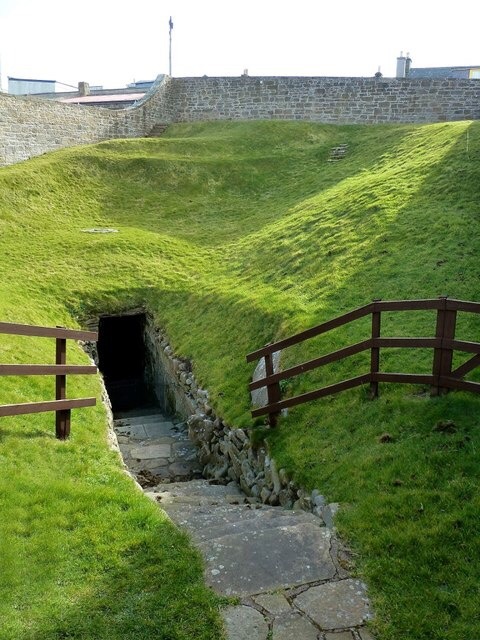

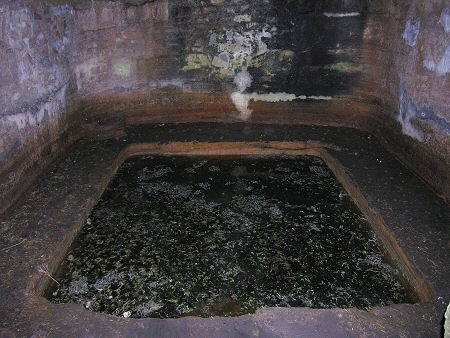
Burghead, Scotland is home to an underground spring unearthed by pictish people from the nearby fort around 1500 - 2000 years ago. The picts regularly drowned people as a method of execution, and one theory about this mysterious place is that it may have served as a site for ritual drownings. Others say it was a shrine built for the Celtic water deities. Later, it was possibly repurposed as a baptism site by Christians repulsed by these Pagan practices. The water reaches 1.3 metres deep and once when emptied by researchers, it took 6 days to fill again. Objects recovered were both pictish: a rock with a bull carved into it, and a stone cross. It is now known as ‘the well’, but the long flight of carved stone steps suggests something far more deliberately and meaningfully spiritual than just a way to collect water. As you descend into the dark pit, the sound of your footsteps echo eerily off of the damp stone.
42 notes
·
View notes
Photo


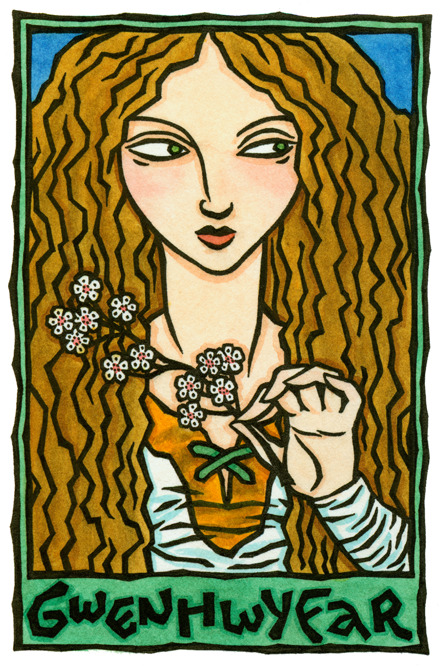
6 notes
·
View notes
Photo


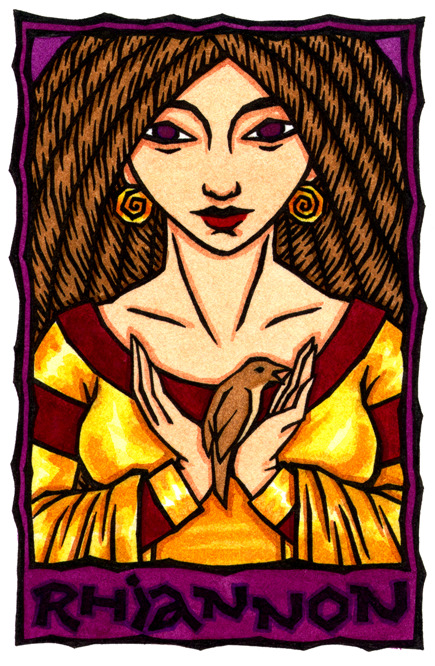

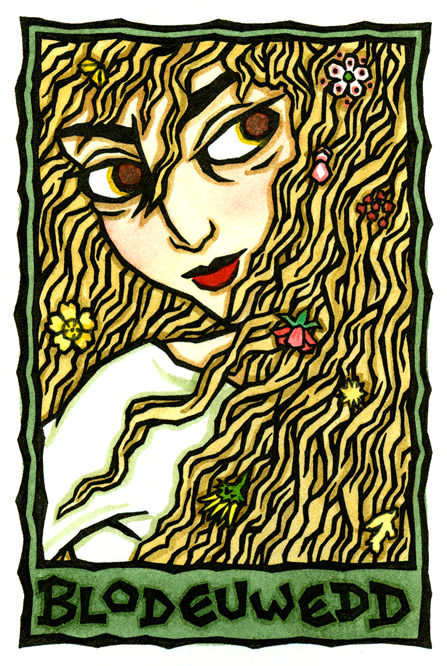

#Danu#Cernunnos#Rhiannon#celtas#celtics#deuses#ancient celts#Gwyn ap Nudd#goddes#Cailleach#Blodeuwedd#celt#celts#paganism
104 notes
·
View notes
Text
Samhain
Samhain - A Morte do Deus
31 de outubro no hemisfério Norte
&
1º de maio no hemisfério Sul
Samhain (pronuncia-se Sou-ein), festejado em 31 de outubro no hemisfério Norte e em 1º de maio no hemisfério Sul, é o Ano-Novo dos Bruxos. Esse dia sagrado é conhecido por inúmeros nomes. Para muitos, talvez, o mais conhecido seja Halloween. Para nós, Bruxos, é a festa na qual honramos nossos ancestrais e aqueles que já tenham partido para o País de Verão.
Essa é a noite em que o véu que separa o mundo material do mundo espiritual encontra-se mais fino e o contato com nossos ancestrais torna-se mais fácil. É também o momento tradicional para celebrar a última das colheitas e se preparar para o Verão.
O poder de magia pode ser sentido no ar, nessa noite. O Outro Mundo se coaduna com o nosso conforme a luz do Sol baixa e o crepúsculo chega. Os espíritos daqueles que já partiram para o outro plano são mais acessíveis durante a noite de Samhain.
Samhain ocorre no pico do Outono. É o tempo do ano em que o frio cresce e a morte vaga pela Terra. O Sol está enfraquecendo cada vez mais rapidamente, a sombra cresce e as folhas das árvores estão caindo, numa preparação ao Inverno que chegará. Essa é a última colheita, o tempo em que os antigos povos da Europa sacrificavam seus gados e preservavam sua carne para o Inverno, pois esses animais não podiam sobreviver em grande escala nesse período do ano devido ao frio vindouro. Só uma pequena parte, os mais viris e fortes, era mantida para o ano seguinte.
Samhain é a noite em que o Velho Rei morre e a Deusa Anciã lamenta sua ausência nas próximas seis semanas. O Sol está em seu ponto mais baixo no horizonte, de acordo com as medições feitas através das antigas pedras da Britânia e da Irlanda, razão pela qual os Celtas escolheram esse Sabbat, em vez de Yule, para representar o Ano-Novo. Para os Antigos Celtas, esse dia sagrado dividida o ano em duas estações, Inverno e Verão. Samhain era o dia no qual começavam o Ano-Novo celta e o Inverno, por isso era um tempo ideal para términos e começos.
É o dia ideal para honrar os mortos, pois nele os véus que separam os mundos estão mais finos. Aqueles que morreram no ano passado e aqueles que estão reencarnando passam através dos véus e portais nesse dia. Os Portões das Sidhe estão abertos e nem humanos nem fadas precisam de senhas para entrar e sair.
Em Samhain, o Deus finalmente morre, mas sua alma vive na criança não-nascida, a centelha de vida no ventre da Deusa. Isto simboliza a morte das plantas e a hibernação dos animais, o Deus torna-se então o Senhor da Morte e das Sombras.
Samhain é um festival do fogo e é a entrada para a parte sombria e fria da Roda do Ano. É em Samhain que as fogueiras são acesas para que os espíritos do outro mundo possam encontrar os caminhos para partirem ao Outro Mundo (País de Verão).
Samhain é o tempo de lembrarmos com amor aqueles que partiram para o outro lado, por isso é chamado de a Festa Ancestral. Toda a família, ou grupo, se reúne para reverenciar os que já partiram. É muito comum nesse Sabbat se realizar uma ceia em silêncio, conectando-se com aqueles que já cruzaram os portais dos mundos. É tradicional também deixar um lugar à mesa para os ancestrais e lhes servir pratos como se eles estivessem presentes à ceia.
Para aqueles que não têm família para festejar e celebrar seus ancestrais, alimentos geralmente são deixados do lado de fora de casa, na porta de entrada, em homenagem aos familiares e amigos desencarnados.
É também tradicional deixar uma vela acesa na janela da casa para ajudar a guiar os espíritos ao longo de sua caminhada ao nosso mundo para que possam encontrar o caminho de volta.
De acordo com os antigos celtas, havia apenas duas divisões do ano que iam de Beltane a Samhain (Verão) e de Samhain a Beltane (Inverno).
Samhain é um dos quatro grandes Sabbats e muitas vezes é considerado o Grande Sabbat.
Por ser o maior de todos e o mais importante também, todos os Pagãos consideram Samhain como a noite mais mágica do ano. Muitas práticas adivinhatórias foram associadas a Samhain, as mais comuns eram aquelas que prenunciavam casamentos e fortunas para o próximo ano que estava se iniciando.
Uma das tradições mais comuns praticadas pelos povos antigos era a de colocar várias maçãs em um grande barril de água. Várias mulheres se reuniam em volta do barril, e a primeira que conseguisse pegar uma das maçãs seria a primeira a casar no próximo ano.
Na Escócia, colocavam-se pedras entre as cinzas da lareira, deixando-as “descansar” durante a noite. Se alguma pedra fosse descoberta durante a noite, representaria a morte iminente durante o próximo ano de um dos moradores da residência.
Sem sombra de dúvida a prática mais famosa do Samhain é o Jack O'Lantern (máscaras de abóboras), que sobrevive até hoje nas modernas celebrações do Halloween. Vários historiadores atribuem suas origens aos escoceses, enquanto outros lhe conferem origem irlandesa. As máscaras eram utilizadas por pessoas que precisavam sair durante a noite de Samhain. As sombras provocadas pela face esculpida n abóbora tinham a virtude de afastar os maus espíritos e todos os seres do outro mundo que vinham para perturbar. Máscaras de abóboras também eram colocadas nos batentes das janelas e em frente à porta de entrada para proteger toda a casa.
O costume norte-americano de vestir-se com trajes típicos e sair pelas casas dizendo Trick or treating, nas noites de Halloween, é de origem céltica. Nos tempos antigos, o costume não era relegado às crianças, mas sim aos adultos. Em tempos ancestrais, os vagantes iam cantando cânticos da época de casa em casa e eram presenteados com agrados pelo seus habitantes. O Treat (presente) também era requerido pelos espíritos ancestrais nessa noite através de oferendas.
O Deus neste período é identificado com os animais que eram sacrificados para continuidade da vida.
Samhain é um tempo para a reflexão, no qual olhamos para o ano mágico que passou e estabelecemos as metas para nossa vida no ano que entra.
Correspondência de Samhain
Cores: preto e laranja
Nomes Alternativos: Festa de Todos os Santos, All Hallows, Mischief Night, Hallowmas, Noite de Saman, Samaine, Halloween, All Hallows Eve.
Deuses: Deuses Anciãos, a Deusa na sua face da Anciã, o Deus como o Senhor das Sombras.
Ervas: nós-moscada, sálvia, menta, mirra, patchuli, artemísia, alecrim, musgo, calêndula, louro, mandrágora.
Pedras: obsidiana, floco de neve, ônix, cornalina, turmalina negra, âmbar, granada, hematita.
Atividades:
Tomar resoluções para serem colocadas em prática no próximo ano que se inicia.
Queima de pedidos.
Confeccionar um Jack O'Lantern.
Fazer oferendas de maçãs e pães no jardim dos ancestrais.
Adivinhação através do Tarô, das Runas, da bola de cristal, da vidência em espelho negro e caldeirões com água.
Fazer máscaras que expressem a sua sombra.
Confeccionar vassouras.
Confeccionar um Bastão Mágico.
Confeccionar uma Witch’s Cord (Corda de Bruxa) para proteção durante o decorrer do ano.
Acender uma vela laranja à meia-noite para atrair sorte no ano que se inicia.
Erigir um Altar com a foto de seus ancestrais amados e colocar oferendas sobre ele, demonstrando seu agradecimento e reconhecimento pelos feitos deles na Terra.
Comidas e Bebidas Sagradas: maçã, romã, nozes, cidra, vinho quente, abóbora, chá de ervas, batata.
Queima de Pedidos
A Queima de pedidos é um dos rituais tradicionais de Samhain. Nele banimos tudo o que tivemos de negativo e pedimos o que queremos atrair de positivo para o ano mágico que se inicia.
Para isso você vai precisar de:
Dois pedaços de papel em branco;
Um lápis;
Álcool de cereais;
Folhas de louro;
Seu Caldeirão.
Num dos papéis escreva tudo aquilo que você quer afastar de sua vida: obstáculos, doenças, pessoas indesejadas, dificuldades, etc.
No outro escreva tudo aquilo que você quer atrair para a sua vida: saúde, prosperidade, amor, sucesso, etc.
Seja bem específico em seus pedidos e não se esqueça de no final assinar e colocar a seguinte frase: Que tudo isso seja correto e para o bem de todos.
Coloque um pouco de álcool no seu Caldeirão, acenda-o e jogue o primeiro papel, aquele que contém as coisas que você quer afastar, no fogo. Enquanto o papel queima, mentalize o mal sendo afastado. Peça à Deusa e ao Deus que todas as forças negativas sejam anuladas e que o mal seja banido.
Espere o fogo acabar, então coloque um pouco mais de álcool no Caldeirão, tomando o devido cuidado, pois o álcool quando colocado em um recipiente quente evapora e pode entrar em combustão espontaneamente. Jogue então o segundo papel, aquele que contém as coisas que você quer atrair para a sua vida, no fogo. Coloque as folhas de louro nas chamas, sempre mentalizando as boas coisas que você quer atrair para a sua vida.
Quando o fogo acabar, concentre-se na fumaça, provocada pelas folhas, subindo os céus, e peça que seus pedidos se elevem ao mundo dos Deuses.
Confeccionando um Jack O'Lantern
A confecção do Jack O'Lantern é uma atividade tradicional desse Sabbat. Eles enfeitam toda a nossa casa no decorrer do dia, além de servirem de ornamentação indispensável para a cerimônia de Sabbat.
Coloque um Jack do lado de fora de sua casa na noite de Samhain para afastar o s maus espíritos e visitas indesejadas de outros planos.
Para confeccionar um Jack você vai precisar de:
· Uma abóbora ou moranga;
· Uma faca;
· Uma vela branca;
· Um óleo essencial de patchuli.
Faça uma tampa na parte superior da abóbora, retire suas sementes e com a faca entalhe uma face na abóbora da forma que você achar melhor. Unja a vela branca com a essência de patchuli e coloque-a dentro da abóbora. Acenda a vela dizendo:
Com esta vela, por esta luz e pela brisa que vem do além
Eu dou as boas-vindas aos espíritos nesta noite de Samhain.
Trançando uma Corda de Bruxa
Trançar uma Corda de Bruxa (Witch’s Cord) é um ato tradicional na noite do Samhain. Elas simbolizam o cordão que liga todos nós ao Outro Mundo, além de serem uma representação simbólica do cordão umbilical que traz todos à vida terrestre.
A Corda de Bruxa é confeccionada utilizando cores apropriadas que simbolizem aquilo que você quer atrair para sua vida no ano mágico que se inicia. Por isso escolher a cor correta para confeccionar sua Corda de Bruxa é essencial:
Branco: Para harmonia.
Vermelho: Para afastar os inimigos, vencer os obstáculos, atrair garra e coragem.
Laranja: Para sucesso e prosperidade.
Rosa: Para atrair amor.
Preto: Para proteção e afastar o azar.
Verde: Para abundância.
Amarelo: Para atrair saúde e ter sorte no comércio.
Caso sua necessidade seja maior do que apenas uma cor pode lhe oferecer, você poderá escolher até três cores diferentes que representem os seus desejos para o próximo ano.
Pegue três barbantes na cor ou cores escolhidas e corte-os na medida de sua altura. Então comece a trançar os barbantes, sempre mentalizando aquilo que você quer atrair para a sua vida, pedindo que a Deusa e que o Deus lhe auxiliem e abençoem a corda que você está trançando.
Quando tiver terminado, costure ou cole alguns símbolos no decorrer da corda que representem o seu objetivo. Por exemplo: corações para amor; moedas para prosperidade, etc.
Coloque a sua Corda sobre o seu Altar durante a celebração do Sabbat e consagre-a durante a cerimônia.
Pendure a sua Corda de Bruxa em um lugar de sua casa e, sempre que visualizá-la, lembre-se dos objetivos que o motivaram a confeccioná-la. Assim sua vontade será ativada.
O Ritual de Samhain
Material necessário:
· Caldeirão;
· Uma vela preta;
· Uma vela laranja;
· Uma maçã;
· Um pão feito por você;
· Uma romã;
· Dois pedaços de papel em branco;
· Lápis;
· Alecrim;
· Uma colher de pau;
· Álcool de cereais;
· O Cálice com vinho.
Procedimento: Coloque o Caldeirão sobre o Altar e disponha a vela laranja do lado direito e a vela preta do lado esquerdo. Coloque a maçã perto da vela laranja e a romã perto da vela preta. Trace o Círculo Mágico e então diga:
Neste dia sagrado, no qual o véu que separa os mundos se encontra mais fino, somos visitados por nossos ancestrais.
Que a Deusa Anciã e o Senhor das Sombras possam abençoar todos os amados que viverem partilhar deste Rito de Sabbat.
Acenda as velas, dizendo:
Sagrados Ancestrais, venham a mim.
Nesta noite eu canto a magia e realizo este ritual em homenagem àqueles que partiram ao País de Verão.
Que este Rito seja agradável aos olhos daqueles que já se foram.
Abençoados sejam todos eles.
Eleve o Caldeirão, dizendo:
Este é o ventre da Mãe, o Caldeirão dos fins e recomeços.
Coloque-o novamente no lugar e pegue um pedaço de papel. Nele escreva tudo o que você quer afastar de sua vida. Acenda-o na vela preta e deixe-o queimar dentro do Caldeirão.
Pegue o outro pedaço de papel e escreva tudo o que você quer atrair para a sua vida. Acenda-o na vela laranja e deixe-o queimar dentro do Caldeirão.
Coloque o alecrim no Caldeirão, junto com as cinzas, e comece a mexer a mistura no sentido horário, dizendo:
Que o velho morra e que o novo possa entrar.
Pelo poder da Vida e da Morte,
Saúdo os espíritos desta noite de Samhaim.
Coloque um pouco de álcool no Caldeirão e então ponha fogo, dizendo:
Através desta luz e o elo mar além,
Saúdo todos os espíritos nesta noite de Samhaim.
Olhe para as chamas do fogo e mentalize todos os seus desejos.
Com o seu Athame, abra a romã, com algumas sementes, enquanto pensam todas as coisas negativas que quer afastar de sua vida. Coloque algumas sementes no fogo.
Parta a maçã ao meio, coma uma das partes e jogue um pequeno pedaço nas chamas do Caldeirão. Mentalize agora tudo o que você quer atrair de positivo.
Com a sua colher de pau, mexa o conteúdo de seu Caldeirão e então diga:
Que o negativo se torne positivo,
Que o mal se transforme em bem,
Que a doença se torne saúde,
E o ódio em amor.
Beba um gole do vinho e despeje um pouco dentro do Caldeirão, fazendo uma libação, enquanto diz:
Faço esta libação em homenagem à Deusa e ao Deus.
Homenageio também a todos os meus Ancestrais.
Que assim seja e que assim se faça!
Toque o pão com o Bastão e diga:
Eu te consagro em nome dos Antigos.
Que você me traga saúde, sucesso, prosperidade e amor.
Coma um pedaço do pão.
Cante, dance e festeje em homenagem à Deusa e aos seus antepassados.
Agradeça aos Ancestrais e destrace o Círculo.
Coloque o resto do pão no seu jardim ou aos pés de uma árvore como oferenda aos seus ancestrais.
Fonte: WICCA A Religião da Deusa de Claudiney Prieto
1 note
·
View note
Photo

#simbolos celtas#simbolos#celtas#celtic#celt#girl#woman#ruiva#tatuagem celta#red-haired#celtic woman#big hair#celta#celtic knot#celtic tattos
51 notes
·
View notes
Text
código de honra da mulher celta
Ama teu homem e o segue,
mas somente se ambos representarem,
um para o outro o que a Deusa Mãe ensinou:
"Amor, companheirismo e amizade."
Jamais permita!
Jamais permita que algum homem a escravize:
você nasceu livre para amar,
e não para ser escrava.
Jamais permita que o seu
coração sofra em nome do amor.
Amar é um ato de felicidade, por que sofrer?
Jamais permita que seus olhos
derramem lágrimas por alguém
que nunca fará você sorrir!
Jamais permita que o uso de seu
próprio corpo seja cerceado.
Saiba que o corpo é a moradia do espírito,
por que mantê-lo aprisionado?
Jamais se permita ficar horas
esperando por alguém que nunca virá,
mesmo tendo prometido!
Jamais permita que o seu nome seja
pronunciado em vão por um homem
cujo nome você sequer sabe!
Jamais permita que o seu tempo
seja desperdiçado com alguém que
nunca terá tempo para você!
Jamais permita ouvir gritos em seus ouvidos.
O Amor é o único que pode falar mais alto!
Jamais permita que paixões desenfreadas
transportem você de um mundo
real para outro que nunca existiu!
Jamais permita que os outros sonhos
se misturem aos seus, fazendo-os
virar um grande pesadelo!
Jamais acredite que alguém possa voltar
quando nunca esteve presente!
Jamais permita que seu útero gere
um filho que nunca terá um pai!
Jamais permita viver na dependência de um homem
como se você tivesse nascido inválida!
Jamais se ponha linda e maravilhosa a fim de esperar
por um homem que não tenha olhos para admirá-la!
Jamais permita que seus pés caminhem em direção
a um homem que só vive fugindo de você!
Jamais permita que a dor, a tristeza, a solidão, o ódio,
o ressentimento, o ciúme, o remorso e tudo aquilo que
possa tirar o brilho dos seus olhos, a dominem,
fazendo arrefecer a força que existe dentro de você!
E, sobretudo,
Jamais permita que você mesma perca a
dignidade de ser mulher.
#celtas#mulheres celtas#historia#irlanda#escocia#gales#europa#independencia da mulher#código de honra da mulher Celta#feminismo
2 notes
·
View notes
